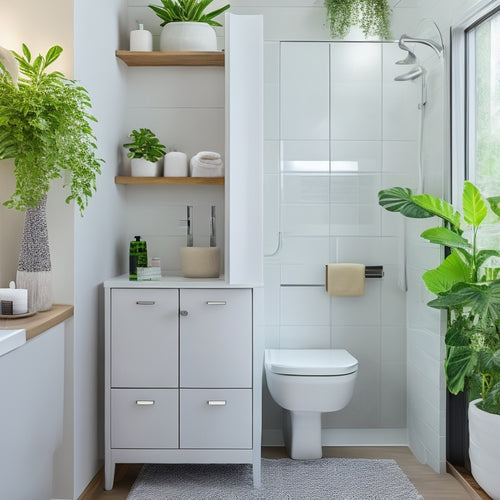
Empowerment Through Personal Growth: IEP Goal Ideas
Share
Empowerment through personal growth is an essential aspect of Individualized Education Programs (IEPs), enabling students to develop skills and confidence for autonomy. To achieve this, IEP goals should focus on daily living skills, personal care, and hygiene, safety and emergency procedures, and independence in daily routines. Establish measurable baselines, determine percentages of accuracy, and customize templates with student details. Examples of goals include preparing simple meals, managing personal finances, and developing good hygiene habits. By setting and working towards these goals, students can boost their confidence and sense of empowerment, taking an important step towards a more fulfilling life, with even more possibilities waiting to be explored.
Key Takeaways
• Establish measurable IEP goals that focus on personal growth, daily living skills, and independence to empower students with disabilities.
• Set specific, achievable goals in areas like personal care, safety, and emergency procedures to promote confidence and autonomy.
• Develop goals that enhance daily routines, such as meal preparation, household chores, and financial management, to increase independence.
• Create goals that promote self-care autonomy, including skills like using utensils, table manners, and toileting routines, for a fulfilling life.
• Customize IEP goals to meet individual needs, with varying trials, time frames, and measurement methods, to track progress and adjust goals as needed.
IEP Goal Basics and Templates
Crafting effective IEP goals relies on a thorough understanding of the basics. This includes establishing a measurable baseline and determining the percentage of accuracy, which serves as the foundation for customization. This foundation allows for template customization, where specific details such as the student's name, goal, and prompts are plugged in.
The number of trials, time frame, and measurement method may vary, but a well-structured template provides a generic framework for IEP goals. Goal measurement is critical, as it enables tracking of progress and adjusting the goal as needed.
Daily Living Skill Goal Ideas
Developing daily living skills is a critical component of an individual's independence, and setting specific, measurable goals in this area can greatly impact a student's ability to function autonomously in their daily life. By setting goals in areas such as meal preparation and household chores, students can develop the skills necessary to live independently.
Here are some daily living skill goal ideas:
- Prepare a simple meal independently, using a recipe and kitchen utensils, with 80% accuracy.
- Complete daily household chores, such as loading the dishwasher or folding laundry, with minimal prompts.
- Demonstrate the ability to shop for groceries, using a list and budget, with 90% accuracy.
- Manage personal finances, including budgeting and saving, with minimal assistance.
Personal Care and Hygiene Goals
Establishing personal care and hygiene routines is a fundamental aspect of daily living, as it directly impacts an individual's overall health, well-being, and confidence. Developing good hygiene habits and self-care routines enables individuals to feel more independent, confident, and prepared for daily life.
Effective personal care and hygiene goals can focus on skills such as brushing teeth, washing hands, using deodorant, and practicing toilet etiquette. Additionally, goals can target self-care routines like showering, dressing, and grooming.
Safety and Emergency Procedures
How can individuals with disabilities prepare for and respond to emergency situations, ensuring their safety and well-being in a variety of contexts? By setting specific IEP goals, individuals can develop essential skills for emergency preparedness. This includes identifying potential hazards, understanding evacuation procedures, and knowing how to seek help in emergency situations.
-
Identify emergency exit routes and assembly points in different settings.
-
Recognize and respond to fire alarms and evacuation signals.
-
Demonstrate understanding of basic first aid procedures, such as calling 911 and providing basic care.
- Identify potential hazards in the environment, such as slippery floors or hot surfaces, and take steps to mitigate them.
Independence in Daily Routines
Individuals with disabilities can greatly enhance their autonomy by acquiring skills in daily routines, such as eating, grooming, and toileting, which are essential for independence and self-sufficiency.
By mastering these daily living skills, individuals can develop self-care autonomy, allowing them to take care of their basic needs without relying on others. This, in turn, boosts their confidence and sense of empowerment.
IEP goals in this area can focus on specific skills, such as using utensils, practicing table manners, or following a toileting routine. By setting and achieving these goals, individuals can develop a greater sense of independence, paving the way for a more fulfilling and self-directed life.
Frequently Asked Questions
What Is the Ideal Frequency for Reviewing and Updating IEP Goals?
Coincidentally, regular check-ins are essential to guarantee IEP goals remain relevant and effective. Ideally, schedule flexible, frequent reviews every 4-6 weeks to update goals, celebrating progress and making data-driven adjustments to support ongoing student growth.
How Do I Ensure IEP Goals Align With Student's Strengths and Needs?
To guarantee IEP goals align with a student's strengths and needs, incorporate student reflection and strength identification through surveys, self-assessments, and progress monitoring, allowing students to take ownership of their goals and celebrate their achievements.
Can IEP Goals Focus on More Than One Skill or Area at a Time?
Yes, IEP goals can focus on multiple skills or areas simultaneously through skill integration, allowing for a more inclusive approach. Effective goal prioritization guarantees that targeted skills align with the student's needs and strengths, promoting thorough growth and development.
How Do I Measure Progress Toward IEP Goals Without Standardized Tests?
According to the National Center for Learning Disabilities, 75% of IEP goals lack measurable criteria, hindering progress tracking. To overcome this, focus on skill mastery by setting specific, observable, and measurable objectives, leveraging tools like rubrics, checklists, and frequency charts to monitor student progress.
What Role Do Parents and Caregivers Play in Implementing IEP Goals?
Parents and caregivers play a crucial role in implementing IEP goals through Home Advocacy, fostering Family Partnerships that promote consistency, support, and generalization of skills, ultimately empowering individuals to achieve their goals in a collaborative and nurturing environment.
Related Posts
-

Waterproof Cabinet Storage for Small Bathrooms
Waterproof cabinet storage can revolutionize your small bathroom by providing effective organization while resisting ...
-

Empowerment and Opportunities at USC JEP
The University of Southern California's Joint Educational Project (JEP) offers a wide range of empowerment and opport...
-

Bronze Bathroom Organizer: Stylish Space-Saving Solution
Bronze bathroom organizers effortlessly combine elegant design with efficient storage solutions, providing a sophisti...


